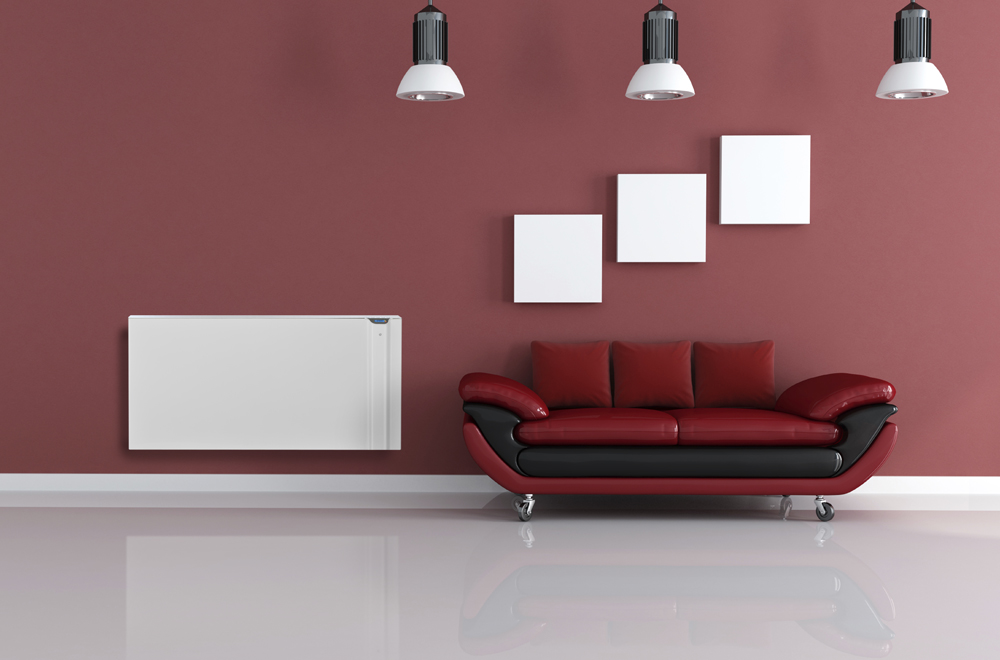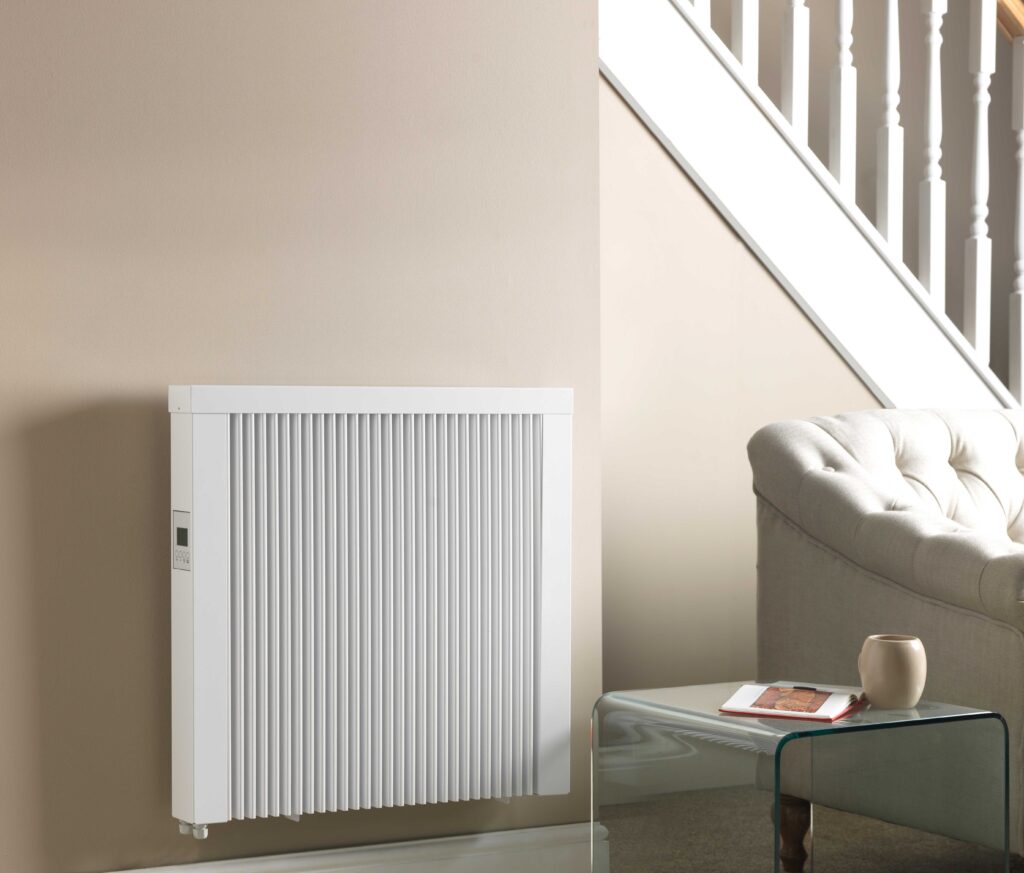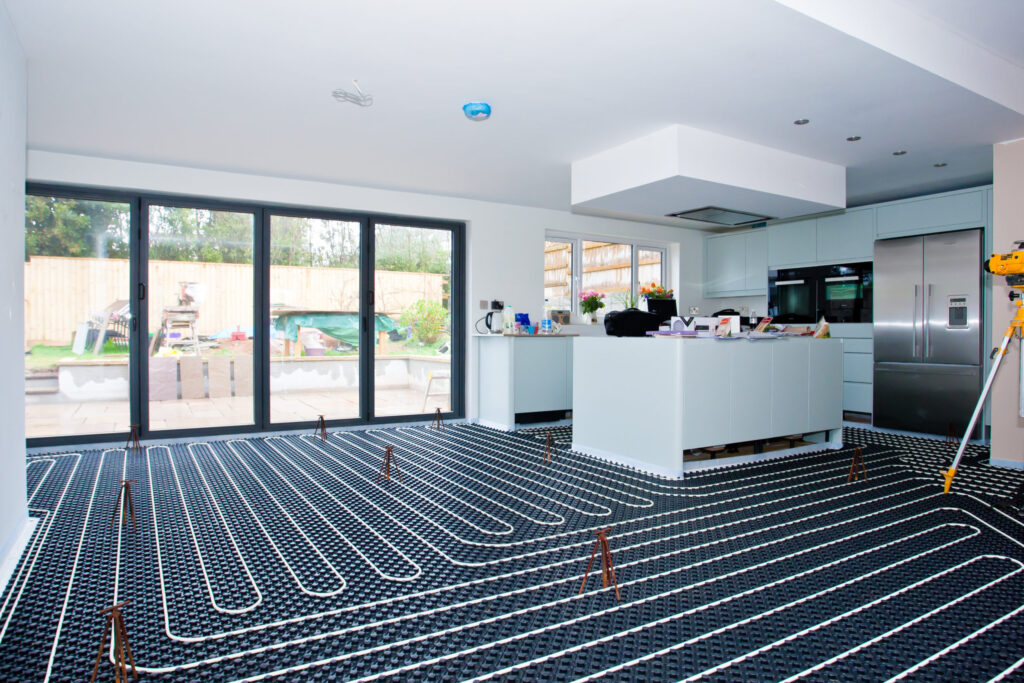
As we find ourselves in the midst of a cost of living crisis, many of us a looking at different home heating solutions. Today, we’re going to compare electric radiators with underfloor heating to determine which is better! We are going to look at how they both work, their pros and cons, and ultimately which is better, and why.
Electric Radiators

We consider ourselves to be experts in the field of electric radiators, so let’s break down what they are. Electric radiators are an efficient, low-carbon alternative to traditional gas central heating. They often come in a wide range of styles and programming options, making them extremely versatile. In fact, they are known as the “use anywhere” heater making them an ideal heating solution.
How do they work?
Electric radiators work in a similar way to central heating radiators, but they are far less cumbersome to install and manage. They don’t need to be connected to a centralised unit or pipe, and they use an internal metal heating element to create warmth. Electric radiators emit their heat though both convection and radiation, creating a combination of comfortable, long lasting heat.
There are 3 main categories of electric radiators;
Ceramic electric radiators contain metal wires baked inside ceramic blocks, supplying higher amounts of radiant heat. There are great for harder-to-warm spaces. They are slightly slower to warm up, but they maintain their temperatures much longer after they stop drawing power.
Oil filled electric radiators contain specially engineered thermal fluid which circulates within the radiator. It’s slower to reach it’s maximum temperature, but similar to ceramic electric radiators, it maintains that heart to maximise efficiency.
Finally, there are dry thermal electric radiators. These contain iron heating rods that are pushed through a specially designed aluminium body. This makes them highly responsive with quick heat up and cool down times.
Programming Electric Radiators

Depending on the model you’re using, there are generally a number of ways to programme your electric radiators. Most come with a precision digital thermostat which is great for reducing energy waste. You simply set the temperature you want, and the radiator can maintain its heat without fluctuation. Most modern electric radiators now come with smart control. This allows you to control you temperature remotely via a WiFi connection paired with either an app, or voice control! Finally, some higher end models come with sensors. They can work in a variety of ways like detecting when there is movement in the room. They can also detect open windows (like our Lucht LHZ range), which again, is great for energy saving.
Electric radiators are best suited as a primary source of heating throughout your home. They can be used all day, or as a top up heater depending on your preferences.
Pros of Electric Radiators
- Easy installation that can even be DIY
- They require zero maintenance
- Convection & radiation provide responsive, long lasting heat
- Compact, lightweight and portable if necessary
- Variety of style options to suit your home interior
- Smart programming options
- 100% efficient at point of use
Cons of Electric Radiators
- They can take longer to reach max temperatures
- Professional hard wiring is required for a full refurbishment or when installing in bathrooms
Underfloor Heating
Underfloor heating is actually far less complex than gas alternatives. Like all other forms of electric heating, it doesn’t need to be connected to your home’s pipe network to run – bonus!

How does it work?
Underfloor heating works by using a network of cables that are wired up to a thermostat and the mains electric. It generates heat in 3 different ways – radiation, convection and conduction. Alot of people opt for underfloor heating as the lower temperature mimics the comforting heat of a warm day.
There are four types of underfloor electric heating;
Foil mat underfloor heating is when heating cables are pre-spaced in an aluminium mat that is placed on top of the original flooring. Then, floating floors are placed directly above.
Sticky mat underfloor heating is when heating cables are pre-spaced with a sticky mesh which is set into a thin layer on cement. This works with any floor type.
With loose wire underfloor heating, you have an unspaced reel of wire that can be hand fitted to any floor type. This can be useful for awkward layouts and corners.
Finally, there are inscreed cables, which are cables fitted directly into the floor. While this is a complex installation, it maximises efficiency.
Programming underfloor heating
When it comes to programming your underfloor heating, there are some similarities to electric radiators, but less options. Generally, a thermostat will be installed into the wall, and controls range from manual to more advanced options. Smart control is also available for underfloor heating thermostats which can also be linked to an app. With that app you can make remote changes, edit schedules and boost your heating.

Underfloor heating is best suited for additional or complementary heating, ideal for rooms with limited wall space. It is perfect for rooms with hard floors, like bathrooms and kitchens. It is generally used as for all day, set and forget heating.
Pros of underfloor heating
- Invisible heating – ideal for saving space
- Heats using radiation, convection, conduction to create comfortable warmth and cost feet
- Smart programming options
- Extremely long lasting
Cons of underfloor heating
- Complex installation – requires a professional
- Generally only suitable for rooms with concrete or wooden flooring
- Not suitable for on-demand heating
- Can be expensive to run depending on floor type
- Requires a large floor area to work optimally
Electric radiators vs. underfloor heating – the winner?
So, now that we’ve looked at both options individually, let’s break down which is better for you.
When it comes to installation, electric heaters are the clear winner here. DIY installation is an option. Regardless of that, installation is fast and causes minimum disruption. When it comes to maintenance, the race is a bit closer. While both options are extremely low maintenance, underfloor heating can be painful if there does happen to be an issue. It can be difficult to locate the fault, and since it is under the floor it can be a hassle to fix. With electric radiators however, a simple part replacement is a very quick fix.
When you look at controllability, again the race is close. The only difference is that electric radiators heat up much quicker. So, if you’re using your smart control to give your home a heating boost, electric radiators are the better option. Finally let’s look at efficiency.
Electric radiators are best used as a primary heat source, with a range of energy-saving features to reduce your heating bills. Underfloor heating, however, can be expensive if you use it throughout your home. Its efficiency correlates directly with floor type and insulation levels. Electric radiators are better suited to deal with draughts and open plan spaces, and the floor type has no effect on the transfer of heat. So it’s a close call but again, electric heaters take the win.

